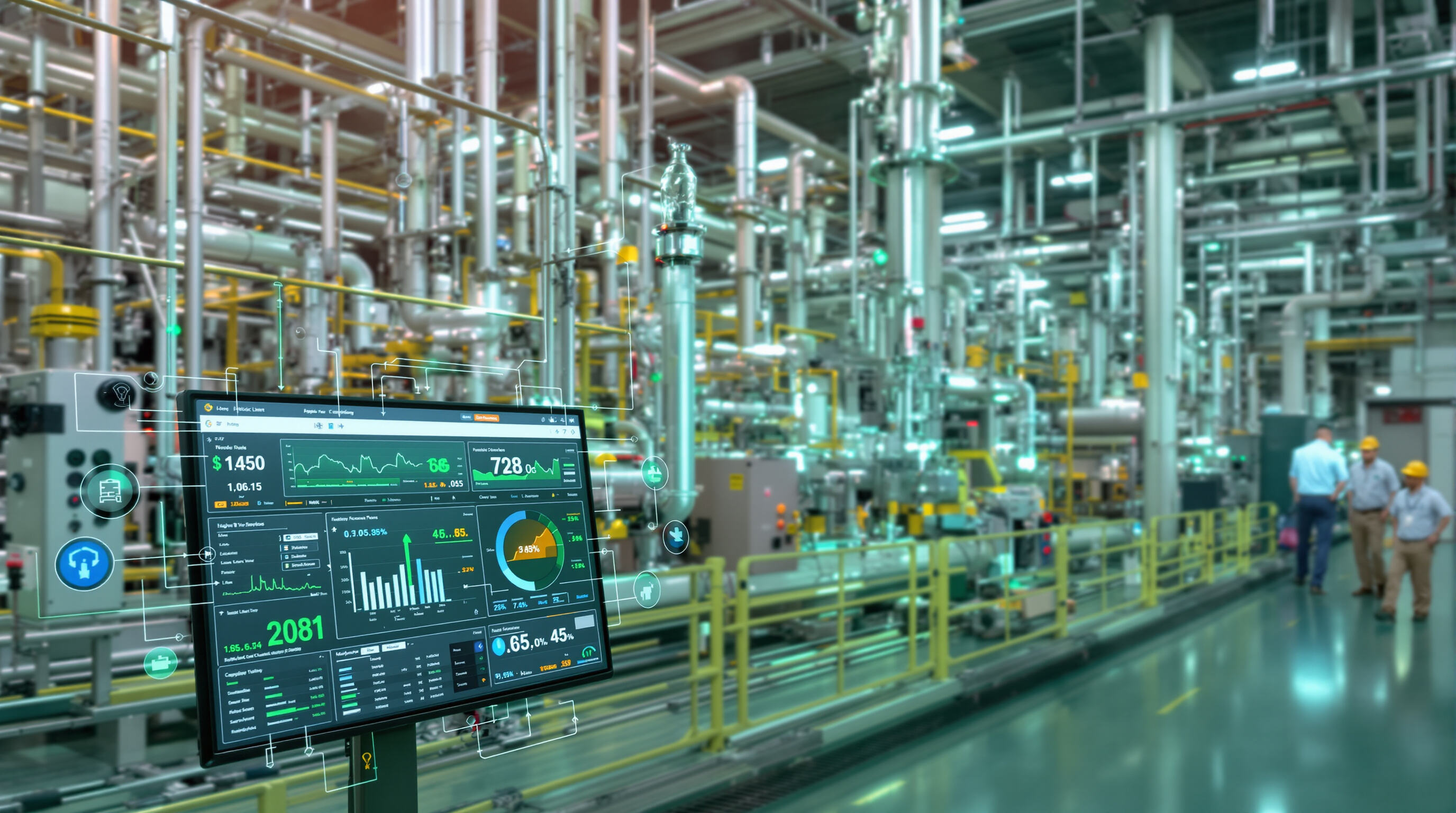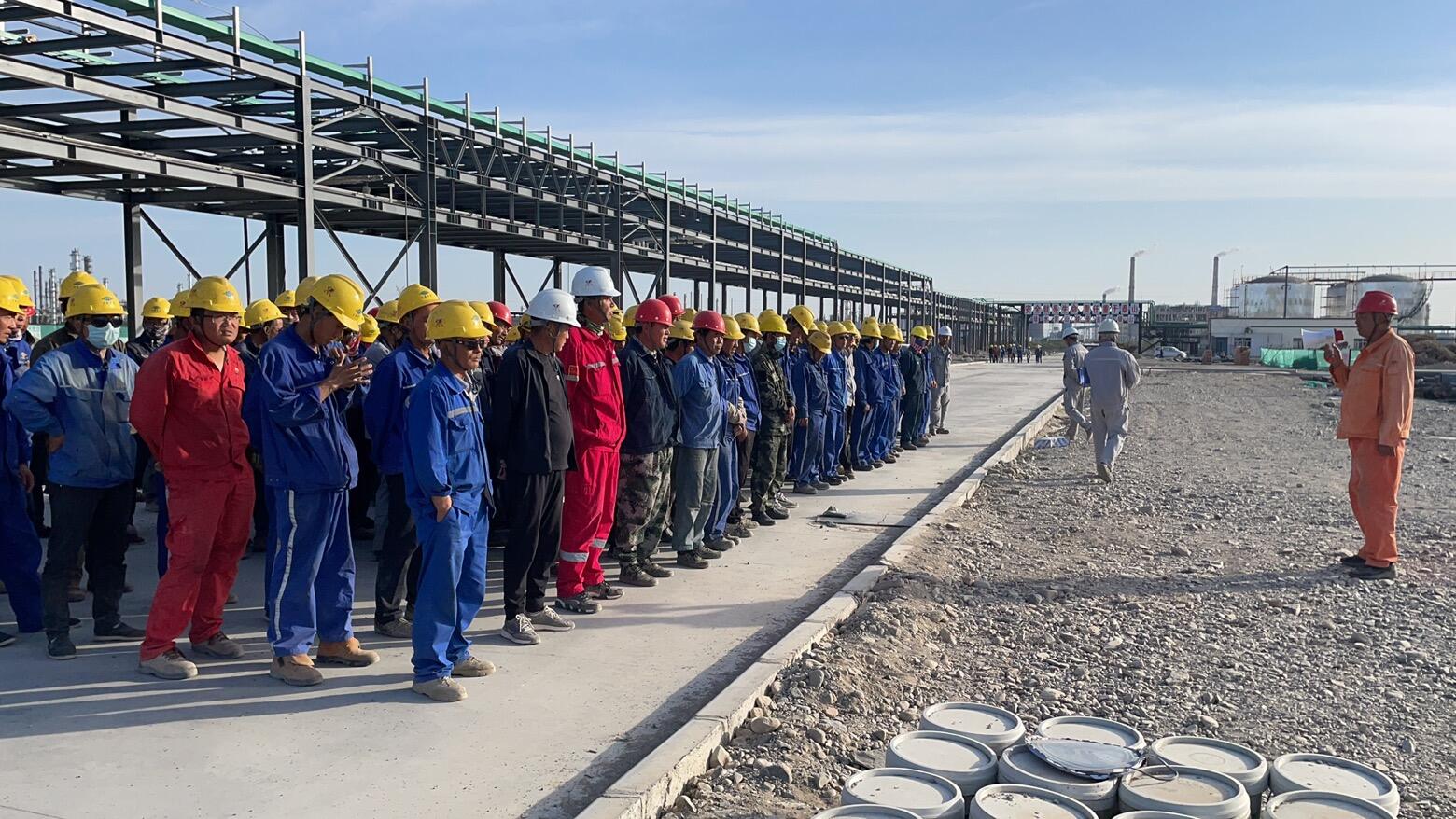Understanding Onsite Guidance and Its Role in Chemical Plant Efficiency
Defining onsite guidance on chemical plant operation
In chemical plants, onsite guidance basically means having people or digital systems watch over operations as things happen. The idea is to blend what experienced workers know with modern tech stuff like those IoT sensors and automated processes. This helps make sure everyone follows the SOPs properly, cuts down on potential problems, and keeps safety standards intact. When compared to just watching from afar, being physically present lets teams catch issues fast when something goes wrong. Think about temperature spikes or pressure changes that could turn into major headaches if left unchecked. Getting on top of these problems right away saves money and prevents downtime that would cost companies big time.
Real-time monitoring and data-driven decisions in operational control
Onsite guidance systems today rely on constant data coming from equipment sensors and various quality check points across the factory floor to make production better. When predictive analytics spots something like a 5 percent decrease in how well reactors are working, plant managers can tweak feedstock mixtures or get maintenance teams out there quickly to fix whatever needs attention. According to Ponemon's research from last year, factories implementing such smart monitoring cut down unexpected shutdowns by around thirty percent, plus they hit nearly all safety requirements too. Moving away from just fixing problems after they happen toward making small improvements ahead of time really boosts output rates and keeps products meeting specifications consistently throughout shifts.
Core Components of Effective Onsite Guidance Systems

Integration of process control and automation in chemical plants
Getting good results from on site operations really depends on combining advanced process control (APC) with modern industrial automation systems. When facilities link their distributed control systems (DCS) to programmable logic controllers (PLCs), they can make instant changes that fine tune how reactions happen and manage materials better. A recent study from McKinsey in 2023 found something interesting too – when these systems work together, there's about a 40% drop in process problems and throughput goes up between 12 and 18 percent. This means plant operators spend less time fixing things manually and more time thinking strategically about improvements instead.
Standard operating procedures (SOPs) and their impact on efficiency
Having solid standard operating procedures really makes all the difference when it comes to getting consistent results from manufacturing processes. The numbers back this up too – companies that combine written SOPs with on-site instructions see around 55% less variation in how things get done according to ASTM International research from 2022. These days many plants have digital versions of their SOPs stored on mobile devices so workers can reference them while handling important operations such as switching catalysts or moving between batches. This accessibility helps boost overall equipment effectiveness by somewhere between 7 and 9 percent, which matters a lot for plant managers looking to maximize productivity without compromising quality standards.
Equipment availability, performance, and quality metrics in OEE
Modern onsite guidance systems keep track of those three key OEE factors Availability, Performance, and Quality through smart IoT sensors. The good news is these systems help cut down planned downtime, keep machines running at their best speed most of the time, and significantly lower the number of defective products coming off the line. Factories that have implemented real time OEE dashboards are seeing response times improve by about 15 to 20 percent when something goes wrong on the production floor. Take viscosity monitoring as an example. When these systems detect that polymer mixtures start drifting beyond the 2% threshold, they kick in automatically to tweak the production line settings, which keeps everything consistent from batch to batch without needing constant manual adjustments.
Proactive maintenance and minimizing unplanned downtime
Transitioning from reactive to predictive maintenance prevents 68% of unplanned outages in chemical processing equipment (PwC 2024). Onsite guidance platforms analyze vibration patterns, lubrication levels, and thermal imaging to schedule interventions during planned shutdowns. This approach extends pump and reactor lifespans by 30% and reduces safety incidents linked to equipment failure by 25%.
Measurable Benefits of Onsite Guidance in Chemical Manufacturing
Improving Operational Efficiency Through Real-Time Adjustments
Onsite guidance enables 12â15% faster response to process deviations by delivering live sensor data and predictive insights directly to operators. In polymerization units, real-time viscosity monitoring prevents 18% of off-spec batches annually while reducing energy waste during recovery cycles (Chemical Processing Journal 2023).
Workflow Optimization and Process Streamlining Outcomes
Automated workflow guidance reduces manual documentation time by 34% in daily shift operations and ensures full compliance with safety protocols. A 2024 study of esterification plants found 27% faster catalyst changeovers and 41% fewer material handling errors using standardized digital checklists.
Case Study: 23% Increase in OEE After Implementing Structured Onsite Guidance
A Midwest chemical producer achieved a 23% increase in Overall Equipment Effectiveness (OEE) within 10 months of deploying an integrated onsite guidance system. Predictive maintenance alerts reduced unplanned reactor downtime by 39%, while real-time quality control integration cut annual rework costs by $740,000âequivalent to 9% of total production expenses.
Best Practices for Implementing Onsite Guidance
Establishing Clear Communication Between Engineers and Operators
Getting things right starts with open lines of communication between the tech folks and people working on the ground. According to research from Ponemon in 2023, places where different departments meet up regularly see about a third fewer mistakes in their procedures than facilities where information gets lost in silos. Good practices include things like proper checklists when handing over shifts and thorough discussions after incidents happen. These help create two way streets for information so workers can flag potential problems early while engineers get better context for making adjustments to processes.
Integrating Digital Tools for Real-Time Performance Tracking
The Industry 4.0 platforms take all that raw data from operations and turn it into something useful for decision making via these central dashboards. What we see on these screens are important numbers like how consistent batches stay within about 1.5 percent variation, plus ongoing looks at reactor temperatures. This gives production teams real power to tweak settings while things are actually running. Looking back at some research from 2022 on automation shows pretty clear results. Facilities that had implemented digital tracking systems were able to spot and fix problems roughly 22 percent quicker compared to places still using old school paper records and spreadsheets.
Aligning Guidance with Continuous Training and Operator Development
Regular training helps close the distance between what people learn and how they actually apply it on the job. Short learning sessions focusing on things like hazard analysis and control loop adjustments not only strengthen safety protocols but also boost first pass yields around 17% at plants that prioritize skill development according to recent research from Chemical Engineering Journal (2023). Interactive games and virtual scenarios help workers develop better awareness of their surroundings, so when unexpected shutdowns happen or raw material quality changes suddenly, they know exactly what steps to take based on proper procedures.
Leveraging Industry 4.0 Technologies in Onsite Guidance

Digital Dashboards and IoT Sensors for Live Operational Insights
More chemical processing facilities are now installing those IoT sensors throughout their operations to keep tabs on equipment condition and track various process parameters as they happen. The data from these sensors flows into digital control panels where operators get immediate visibility into what's going on across the plant floor. This helps maintenance crews spot trouble spots early, monitor how much power different systems consume, and tweak production lines for better efficiency. Take distillation towers for instance - when temperature spikes or pressure drops outside normal ranges, the sensors send warnings so technicians can fix problems before bad batches start forming. According to some recent industry reports, this kind of proactive monitoring cuts down unexpected shutdowns by around 15 to 20 percent. When plant managers combine traditional hands-on expertise with all this sensor data, they end up running facilities that react faster to changing conditions and make decisions based on actual numbers rather than guesswork.
AI-Driven Analytics for Predictive Maintenance and Efficiency
Smart systems powered by artificial intelligence look at past records and current sensor readings to spot when machines might break down as much as three days ahead of time. According to some research from last year in the field of factory automation, these predictions hit around 92 percent mark most of the time. When these platforms connect information about machine vibrations, heat patterns, and service history together, they can tell operators exactly when to step in for repairs. This kind of timing helps keep expensive equipment running longer too, sometimes adding anywhere between 18 to 30 extra months before replacement becomes necessary. Companies that got on board early with this technology are seeing real savings too. Maintenance expenses drop by roughly 22 percent for them while their production output goes up about 13 percent annually across different facilities.
Trend: Adoption of Industry 4.0 Principles in Chemical Manufacturing
More than two thirds of chemical manufacturing companies have started implementing Industry 4.0 technologies these days, mainly because of tougher safety rules and the promise of boosting productivity by around 25%. There are several reasons behind this trend. First, regulators want better tracking of emissions using those smart sensors everyone keeps talking about. Second, production lines need to be able to handle sudden changes in raw materials. And third, there's actual money to be saved through AI systems that optimize batch schedules. Take ethylene plants for example where some have already improved yields by 18% thanks to these optimizations. When manufacturers combine internet connected devices (IoT), artificial intelligence, and automated processes together, they tend to make decisions about 19% quicker compared to traditional setups.
Frequently Asked Questions (FAQ)
What is onsite guidance in chemical plant operations?
Onsite guidance involves having people or digital systems oversee the operations in chemical plants to enhance efficiency and ensure compliance with standard operating procedures (SOPs).
How does real-time monitoring benefit chemical plants?
Real-time monitoring helps in making data-driven decisions, reducing unexpected shutdowns by approximately 30%, and maintaining consistent production quality.
What are the advantages of integrating process control and automation?
Integration leads to a reduction in process problems by about 40% and an increase in throughput between 12 to 18%.
How do modern onsite guidance systems improve OEE?
They track Availability, Performance, and Quality via IoT sensors, improving response times by 15 to 20% and ensuring consistent product quality.
What role does proactive maintenance play in onsite guidance?
Proactive maintenance reduces unplanned outages by 68% and extends equipment lifespans by 30%, enhancing safety and operational efficiency.
Table of Contents
- Understanding Onsite Guidance and Its Role in Chemical Plant Efficiency
- Core Components of Effective Onsite Guidance Systems
- Measurable Benefits of Onsite Guidance in Chemical Manufacturing
- Best Practices for Implementing Onsite Guidance
- Leveraging Industry 4.0 Technologies in Onsite Guidance
- Frequently Asked Questions (FAQ)

